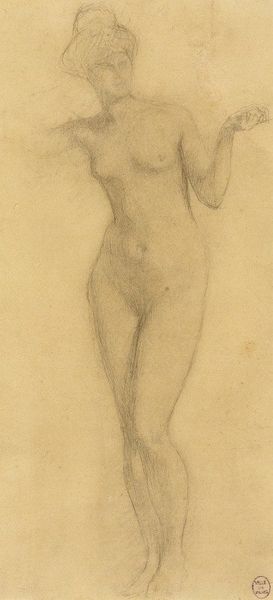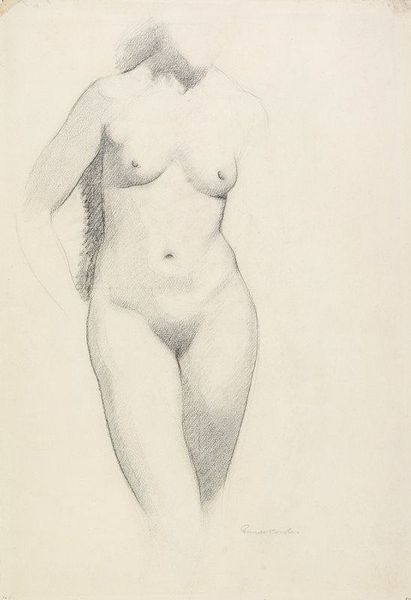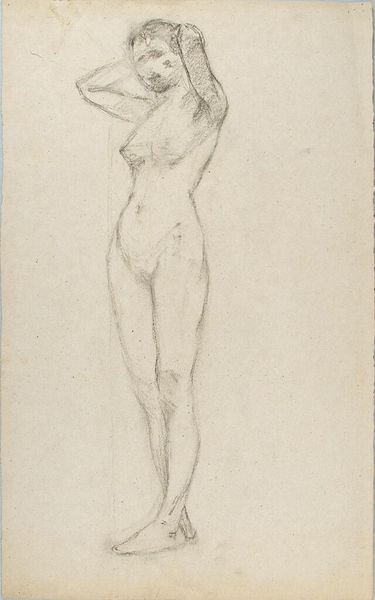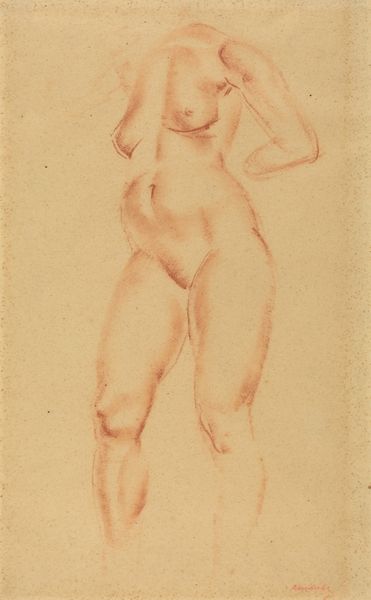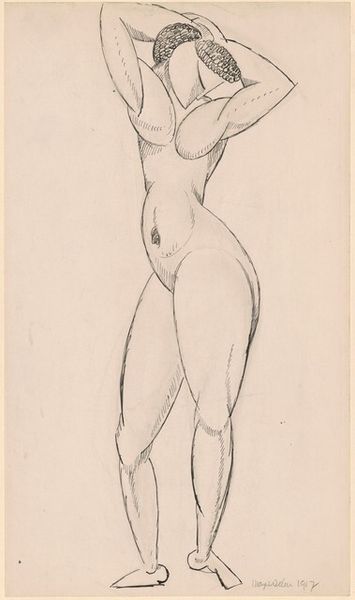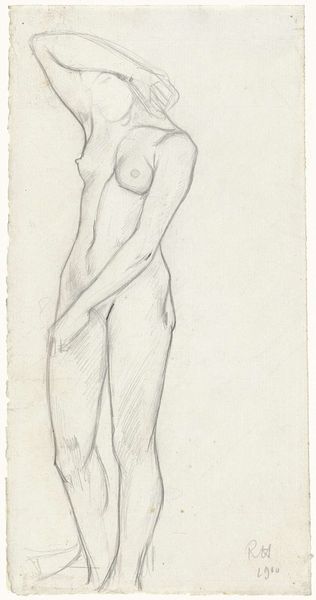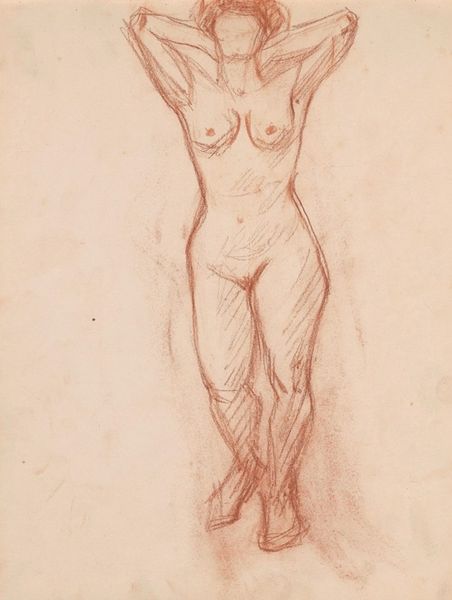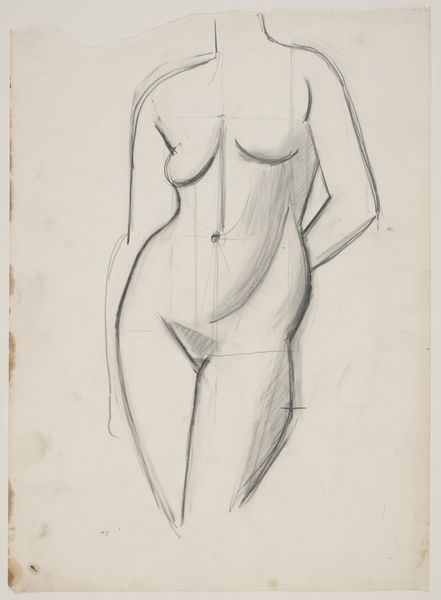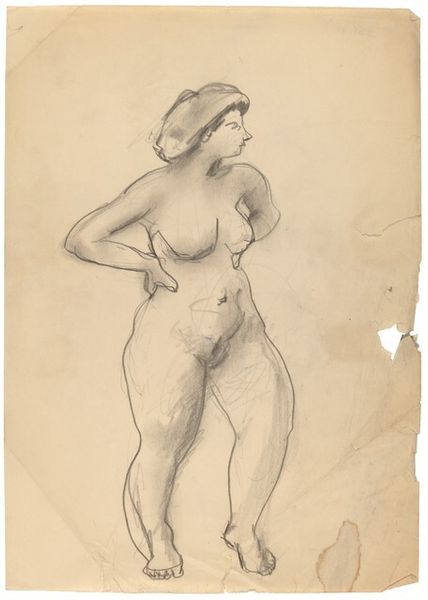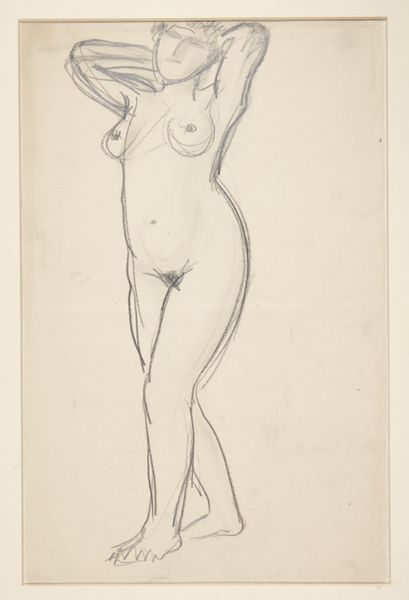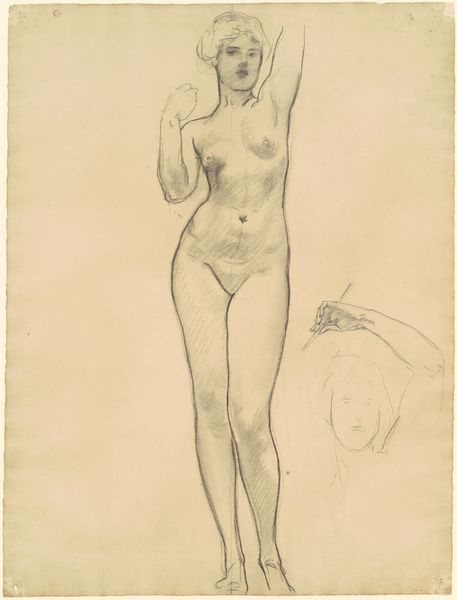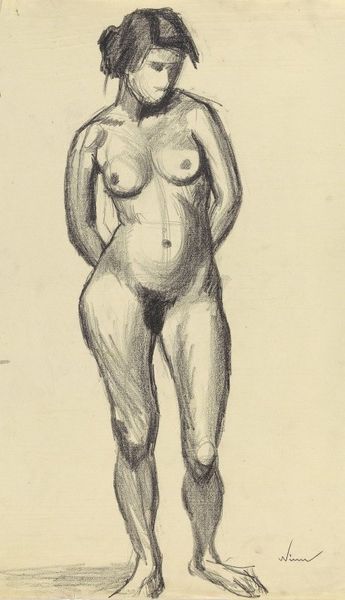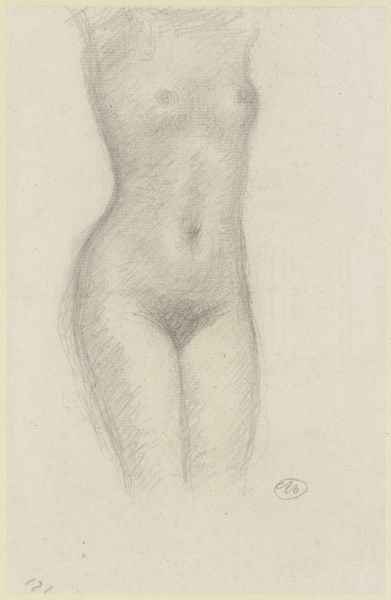
drawing, pencil
#
drawing
#
figuration
#
pencil drawing
#
pencil
#
academic-art
#
nude
#
realism
Dimensions: sheet: 45.72 × 25.88 cm (18 × 10 3/16 in.)
Copyright: National Gallery of Art: CC0 1.0
Editor: This is Augustus Vincent Tack's "Nude Female Torso," dating from around 1900, created using pencil. It's a fairly straightforward drawing, but I’m struck by how vulnerable and incomplete it feels. How do you interpret this work? Curator: It’s interesting you mention vulnerability. Let's think about this drawing within the historical context of the early 20th century. The academic tradition often objectified the female form, presenting it as an ideal. However, Tack's rendering, with its unfinished quality and visible pencil strokes, seems to offer something different. What does this fragment reveal about the gaze of the artist and the power dynamics at play when representing the human body? Editor: I hadn't really thought about it like that. I suppose it does avoid idealization in some ways, presenting a more immediate, perhaps even honest, representation. The lack of a face is intriguing. Is it an intentional de-personalization? Curator: Precisely. It prompts us to consider the politics of representation itself. Who is given a face, a voice, a complete identity, and who is reduced to a body? Tack, perhaps unconsciously, is engaging with questions of gender, power, and the artistic canon. Think about the ways in which women artists at the time were fighting for recognition, for the right to represent themselves. Does this drawing echo some of those struggles? Editor: It's a more loaded piece than I initially gave it credit for. Considering its historical context really brings out those layers of meaning. Curator: Absolutely. By engaging with the historical and social forces shaping the artwork, we can begin to understand its broader significance and relevance to contemporary discussions around identity and representation. Editor: This has been super insightful, highlighting the importance of contextualizing artworks within their time and considering their potential political implications. Thanks!
Comments
No comments
Be the first to comment and join the conversation on the ultimate creative platform.
